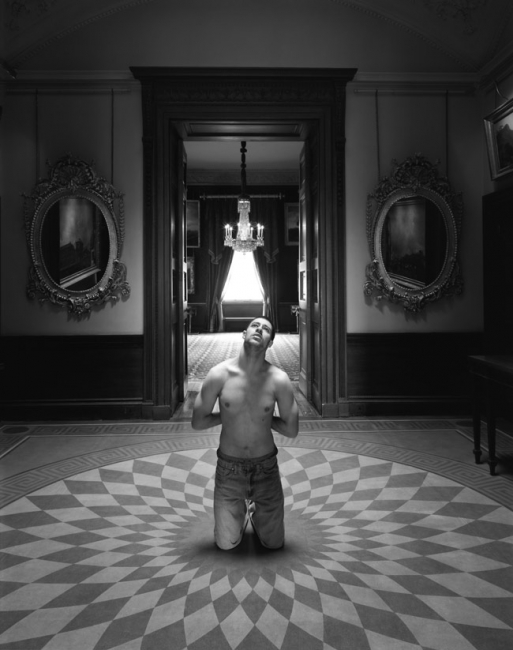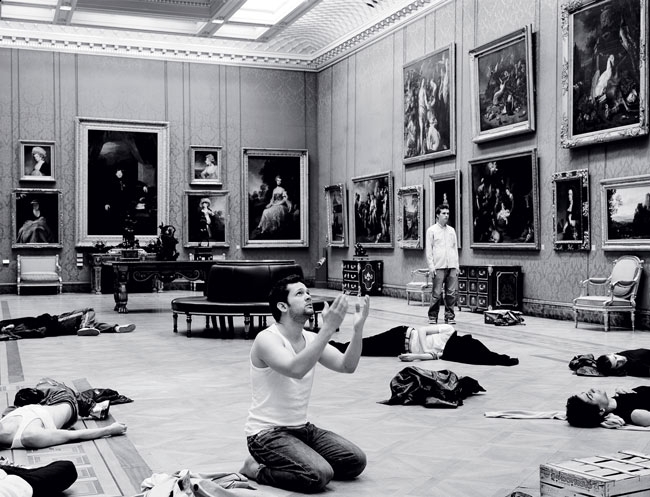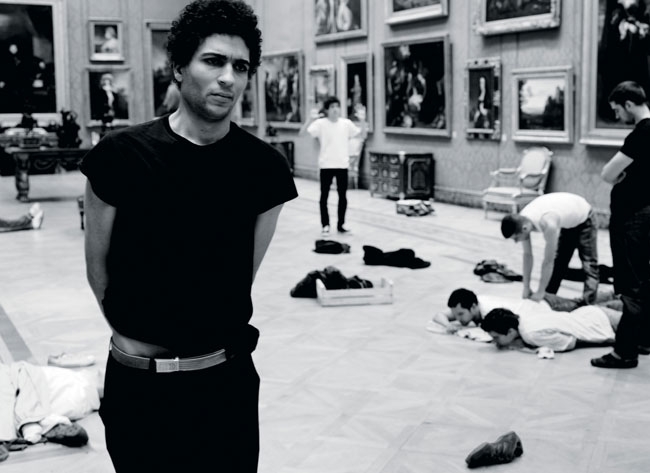Reza Aramesh’s recent series, collectively entitled “Between the Eye and the Object Falls a Shadow…”(deriving from the text of the Burroughs File by William S. Burroughs, 1984), undoubtedly finds its point of departure in the Western classical art. Nevertheless, Aramesh more specifically draws inspiration from the 17th century Spanish artist Francisco de Goya’s “The Disaster of War” (1810-1820). But he here chooses to turn attention away from the narrative of warfare and prefers to decontextualize acts of aggression. Indeed, Aramesh’s scenarios are staged indoors, in lavish historical mansions such as the Cliveden House, the Wallace Collection and Kenwood House. The suggestion that wealth and financial interests are fundamentally intertwined with warfare is thus a common feature of all works of this series.
This series of works is based on imagery provided by agencies, sourced from daily papers and the Internet depicting wars, conflicts and their direct consequences in the Middle East or in Vietnam from the 1960’s to the present day. Aramesh ‘s meticulously composed black and white stills, which he refers to as Actions, capture dramatic scenes re-enacted by non-professional actors chosen within an age range that is approximately that of the artist and from ethnic groups that were affected by armed conflict in the recent past.
In each of these tableaux, no interaction between the participants is to be seen, no eye contact, all individuals seem to be on its own; communality is only established by their involvement in the same scenario. There are no weapons, nor are there any instruments of torture or confinement. We do not witness aggression; we observe characters frozen in their respective gestures, of oppressor, of oppressed, by situation of conflict. Indistinctively, all participant swear casual street clothing, suggesting that we all have the potential to be both the victim and victimizer.
None of the “guards” holds a gun, but also none of the “captives” are longer blindfolded, which creates a tension between the words of the title(directly taken from the quote of the original image in the press) and the image.
But the faces of the participants are grave, sometimes imploring, they seem to be already somewhere else. These new martyrs are instantly becoming of classic beauty.




Follow us on: